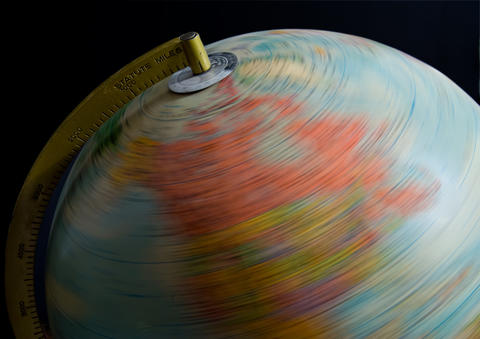
June 29th was a short day. Earth completed its rotation 1.59 milliseconds shy of the 24 hours of time measured by atomic clocks. You may not have noticed; that’s less time than it takes to blink. For scientists who track the length of days, 1.59 milliseconds, or thousandths of a second, is noteworthy, but probably not as earthshaking for most of the rest of us.
A day is one full Earth rotation on its axis. But the Earth wobbles as it turns, and its rotation speeds up and slows down over time. There are several reasons for this variation, and their impacts are difficult to estimate. One effect that can speed up the Earth’s rotation is the interplay between the deep interior of the Earth, its core, and the outer material, the mantle.
Atomic clocks, however, are much more stable when it comes to keeping time. By counting a day as 24 hours, they have run a little “fast” in the long term when compared to a complete rotation of the Earth.
Since 1972, the international scientific community has adjusted atomic time with leap seconds to let Earth “catch up” — periodically adding one second to atomic time before midnight so our clocks better align with Earth’s rotation.
Scientists try to predict how the Earth’s rotation will change so they know how to steer the clocks in the future. In the early 2000s, Earth’s rotation was predicted to slow down and keep slowing, making solar days longer. That’s what made the shorter day in June a little surprising. The short day didn’t fit with the prediction or the long-term trend.
But it doesn’t mean days will keep getting shorter. Since 1600, scientists have seen days get longer, on average, by about 1.4 milliseconds every century. And even then there have been years in the 19th century where days got shorter by almost 2 milliseconds.
With advanced atomic clocks, we can better keep track of these changes, which could tell us how the Earth itself is changing even on small scales. And keep in mind that Earth days were much shorter in our planet’s early history. So even if our days run a little short from time to time, it’s nothing to lose sleep over.
Follow us on social media for more like this from all across NIST!

